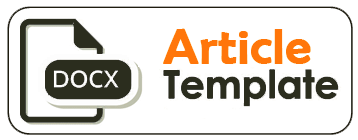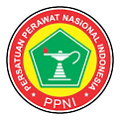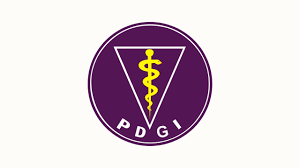The Effect of Massage Therapy on Preventing Delayed Onset Muscle Soreness (DOMS) in Sprinters
DOI:
https://doi.org/10.26630/jk.v16i2.5013Keywords:
Effleurage, Kneading, Range of motion, Sprinter athletesAbstract
Sports significantly contribute to students' physical and mental development, enhancing fitness and social skills. However, high-intensity training, such as sprinting, often results in Delayed Onset Muscle Soreness (DOMS), which can impair athletic performance and motivation. Massage manipulation therapy is a physiotherapeutic approach aimed at preventing and alleviating DOMS symptoms while increasing the Range of Motion (ROM) and reducing muscle pain in sprinter athletes at SMAN 91 Jakarta. This quasi-experimental study employed a pre-test and post-test design with three groups: ESK (effleurage, shaking, kneading, n=15), ESH (effleurage, shaking, hacking, n=16), and a control group (n=13). Interventions were administered once weekly over four weeks. ROM was measured using a goniometer, and muscle soreness was assessed via the Visual Analog Scale (VAS). Data were analyzed using the Kolmogorov-Smirnov and Shapiro-Wilk tests for normality, the Friedman test, and further analysis using the Kruskal-Wallis test for within-group differences. The ESK group showed a significant reduction in muscle soreness from a mean of 3.48 to 1.91 (p<0.005), while the ESH group exhibited a significant improvement in ROM from a mean of 1.56 to 3.06 (p<0.005). The control group showed no statistically significant changes in either variable. Massage manipulation therapy was effective in reducing muscle pain and enhancing ROM. ESH was more effective for improving ROM, whereas ESK was more effective for reducing pain. These findings emphasize the importance of combining multiple Massage techniques for comprehensive physiotherapy benefits in school-based athletic training.
References
Cheung, K., Hume, P. A., & Maxwell, L. (2003). Delayed onset muscle soreness: treatment strategies and performance factors. In Sports Medicine (Vol. 33, Issue 2). https://doi.org/10.2165/00007256-200333020-00005
Connolly, D. A. J., Sayers, S. P., & McHugh, M. P. (2003). Treatment and prevention of delayed onset muscle soreness. Journal of Strength and Conditioning Research, 17 (1). https://doi.org/10.1519/1533-4287(2003)017%3C0197:TAPODO%3E2.0.CO;2
Davis, H. L., Alabed, S., & Chico, T. J. A. (2020). Effect of sports massage on performance and recovery: a systematic review and meta-analysis. BMJ Open Sport & Exercise Medicine, 6(1). https://doi.org/10.1136/bmjsem-2019-000614
Fitrian, Z. A. (2023). Pengaruh treatment sport massage terhadap pencegahan timbulnya delayed onset muscle soreness pada pemain futsal sman 1 banjarmasin. [Thesis]. Yogyakarta: Fakultas Ilmu Keolahragaan dan Kesehatan, Univesitas Negeri Yogyakarta.
Kerr, Z. Y., Lynall, R. C., Roos, K. G., Dalton, S. L., Djoko, A., & Dompier, T. P. (2017). Descriptive epidemiology of non–time-loss injuries in collegiate and high school student-athletes. Journal of athletic training, 52(5), 446-456. https://doi.org/10.4085/1062-6050-52.2.15
Mahesvi, H., Sukarmin, Y., Suhartini, B., Bartik, P., Hansdorfer-Korzon, R., & Adil, H. M. (2024). How does ali satia graha and thai massage method compare? Study on pain and range of motion of chronic ankle injury. Tanjungpura Journal of Coaching Research, 2(3), 124-130. https://doi.org/10.26418/tajor.v2i3.65878
McEwen, J. A., Owens, J. G., & Jeyasurya, J. (2019). Why is it crucial to use personalized occlusion pressures in blood flow restriction (bfr) rehabilitation. Journal of Medical and Biological Engineering, 39(2). https://doi.org/10.1007/s40846-018-0397-7
Melzack, R., & Wall, P. D. (1965). Pain mechanisms: a new theory: a gate control system modulates sensory input from the skin before it evokes pain perception and response. Science, 150(3699), pp. 971–979. https://doi.org/10.1126/science.150.3699.971
Peake, J. M., Neubauer, O., Gatta, P. A. D., & Nosaka, K. (2017). Muscle damage and inflammation during recovery from exercise. Journal of Applied Physiology, 12(3). https://doi.org/10.1152/japplphysiol.00971.2016
Pemerintah Republik Indonesia. (2003). Undang-Undang Nomor 20 Tahun 2003 tentang Sistem Pendidikan Nasional. Jakarta.
Pemerintah Republik Indonesia. (2005). Undang-Undang Nomor 3 Tahun 2005 tentang Sistem Keolahragaan Nasional. Jakarta.
Prentice, W. (2024). Rehabilitation techniques for sports medicine and athletic training. Taylor & Francis. https://doi.org/10.4324/9781003526308
Priyonoadi, B., Sutapa, P., & Graha, A. S. (2019). Sports Massage to Improve the Immunoglobulin A (Iga) and the Hormon Beta Endorphin. Proceedings of the 3rd Yogyakarta International Seminar on Health, Physical Education, and Sport Science in Conjunction with the 2nd Conference on Interdisciplinary Approach in Sports (Vol. 1, pp. 704-709). https://doi.org/10.5220/0009801807040709
Proske, U., & Morgan, D. L. (2001). Muscle damage from eccentric exercise: mechanism, mechanical signs, adaptation, and clinical applications. Journal of Physiology, 537 (2). https://doi.org/10.1111/j.1469-7793.2001.00333.x
Rahmawati, P. L., Dwiningsih, S. R., & Herawati, L. (2021). A combination of effleurage and kneading massage can reduce the intensity of dysmenorrhea. Indonesian Midwifery and Health Sciences Journal, 4(1). https://doi.org/10.20473/imhsj.v4i1.2020.51-59
Sari, S. (2018). Mengatasi doms setelah olahraga. Motion: Jurnal Riset Physical Education, 7(1). https://doi.org/10.33558/motion.v7i1.500
Shrier, I., & Gossal, K. (2000). Myths and truths of stretching. The Physician and Sportsmedicine, 28(8), pp. 57¬-63. https://doi.org/10.3810/psm.2000.08.1159
Weerapong, P., Hume, P. A., & Kolt, G. S. (2005). The mechanisms of massage and its effects on performance, muscle recovery, and injury prevention. Sports Medicine, 35(3). https://doi.org/10.2165/00007256-200535030-00004
Wijayanto, A. (2023). Sport massage: pijat kebugaran olahraga. Tulung Agung: Akademia Pustaka. https://doi.org/10.31219/osf.io/mwbfx
Wiyoto, B. T. (2011). Remedial massage panduan pijat penyembuhan bagi fisioterapis praktisi, dan instruktur. Yogyakarta: Nuha Medika.
World Health Organization. (2019). Global action plan on physical activity 2018-2030: more active people for a healthier world. World Health Organization.
Downloads
Published
Issue
Section
License
Copyright (c) 2025 Wiwit Azmi Lestari, Ratna Wardani, Haryono

This work is licensed under a Creative Commons Attribution-ShareAlike 4.0 International License.
Authors who publish in this journal agree to the following terms:
- Authors retain copyright and grant the journal right of first publication with the work simultaneously licensed under a Creative Commons Attribution License (CC BY-SA 4.0) that allows others to share the work with an acknowledgment of the work's authorship and initial publication in this journal.
- Authors can enter into separate, additional contractual arrangements for the non-exclusive distribution of the journal's published version of the work (e.g., post it to an institutional repository or publish it in a book), with an acknowledgment of its initial publication in this journal.
- Authors are permitted and encouraged to post their work online (e.g., in institutional repositories or on their website) prior to and during the submission process, as this can lead to productive exchanges and earlier and greater citations of published work.











